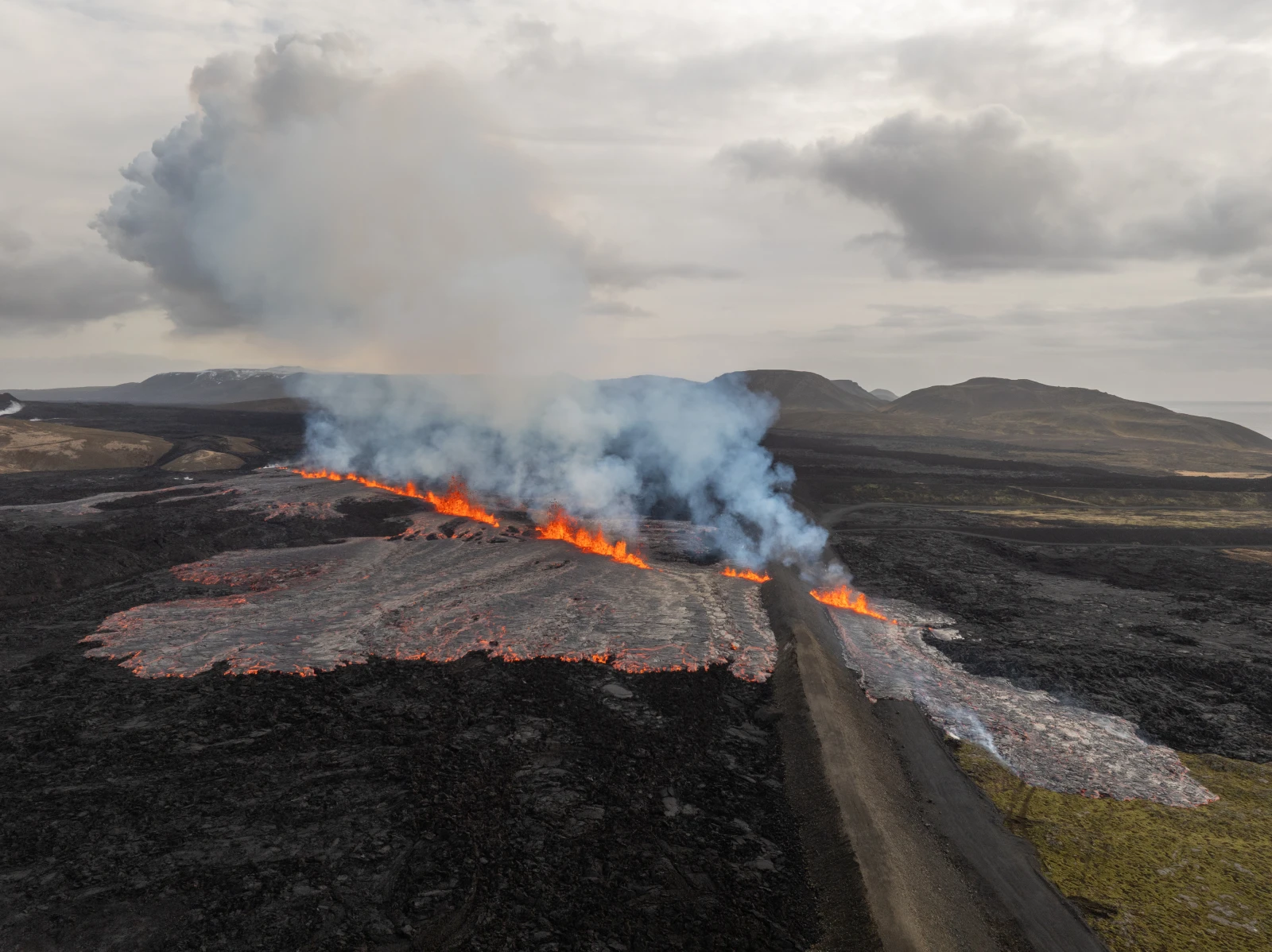A volcano in southwestern Iceland, which has been erupting intermittently for over a year, erupted once more on Tuesday, sending lava and smoke into the air. This eruption followed the evacuation of the remaining residents from a nearby fishing village, Grindavik, just hours before.
The eruption, which began at 9:45 a.m. local time (0945 GMT), triggered warning sirens throughout Grindavik. Webcams captured scenes of molten rock pouring toward the town. Although the eruption had subsided by late afternoon, Iceland’s Met Office confirmed that the volcano remained active.
Authorities had evacuated Grindavik and the popular Blue Lagoon geothermal spa, one of the country’s largest tourist attractions, after an earthquake swarm early on Tuesday suggested that an eruption was imminent. Grindavik, located on the Reykjanes Peninsula, was partially evacuated in November 2023 when the volcano, which had been dormant for around 800 years, became active again.
On Tuesday, approximately 40 homes were evacuated, though some residents chose to stay behind. “Those individuals who choose to remain in the town don’t seem to consider that I have 50 people involved in this operation, some of whom are volunteers,” said Úlfar Lúðvíksson, police commissioner in South Iceland, during an interview with local broadcaster RUV. “I would ask that more consideration be shown towards civil defense.”
Iceland, which lies above a volcanic hotspot in the North Atlantic, is no stranger to volcanic activity. The most disruptive eruption in recent memory was the 2010 eruption of the Eyjafjallajokull volcano, which caused significant ash clouds and disrupted air travel across the Atlantic for months.
Despite Tuesday’s eruption, flights in and out of the country were not affected.






